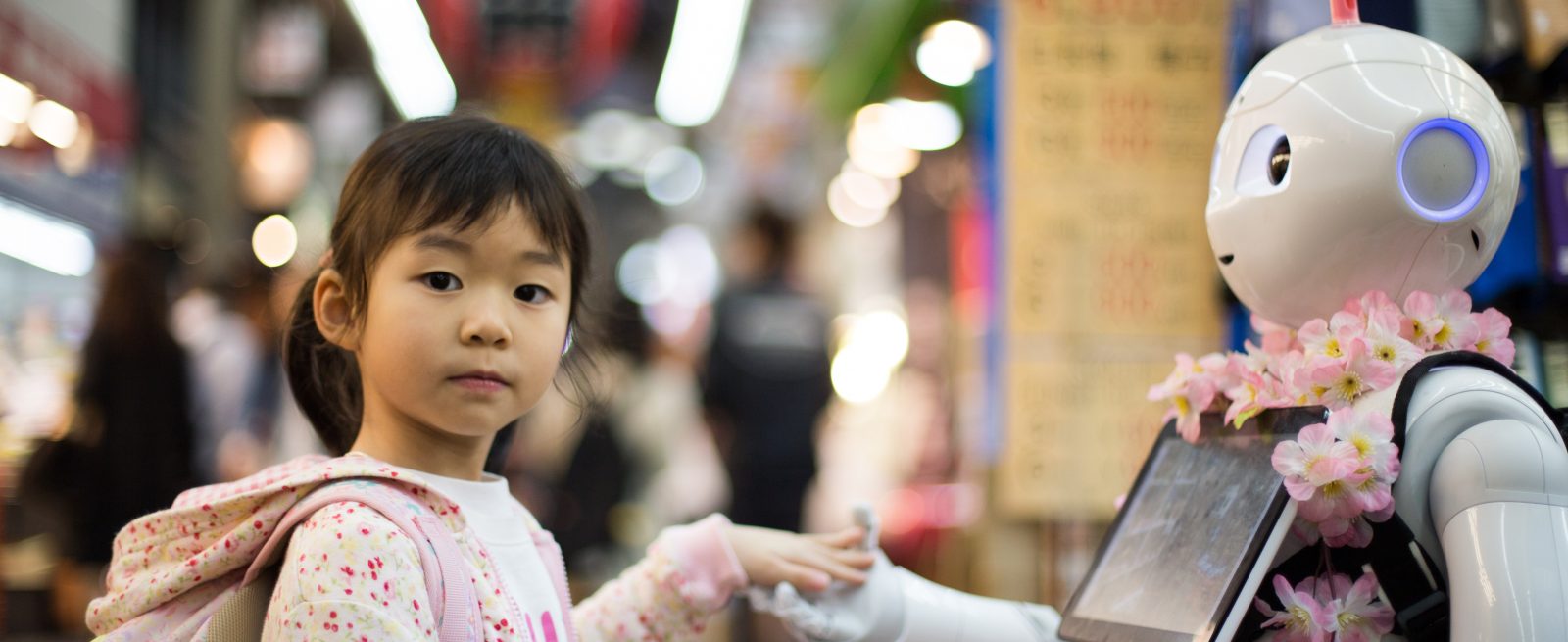Robots Are Making Our Restaurants Safer
5 Min Read By Aaron Cohen
Customers at Henn-na, a restaurant in Japan, have their food prepared by a row of robots. The “head chef,” a robot named Andrew, makes okonomiyaki, a Japanese pancake. He has been programmed to stir the batter, pour it on the grill, and wait a specific amount of time for it to cook perfectly. Other Henn-na robots fry donuts, portion ice cream into cones, and even make boozy drinks.
Spyce, an innovative new restaurant in Boston, uses automated woks to prepare and plate guests’ meals in three minutes or less. The restaurants’ technologies allow their robots to seamlessly process orders, collect and measure ingredients, cook meals precisely, and plate the food, which human employees deliver to guests.
Chowbotics, a California company, manufactures Sally, a salad-making robot who is programmed to combine produce based on customers’ specific requests. San Francisco restaurant Creator features two large, robots that use 350 sensors and 20 microcomputers to produce fresh, delicious burgers, made to order.
Technology is elevating food safety in our restaurants and other food businesses.
These restaurants – and their burger, salad, and Japanese-pancake making robots – are part of a new trend in the food service industry. Now, restaurants are combining the latest tech tools – sensors, software, robotics, and artificial intelligence – with exceptional culinary experiences. (Case in point: Michelin-starred chef Daniel Boulud partnered with robotics engineers from Massachusetts Institute of Technology to launch Spyce.) These restaurants – and the others that are sure to follow in their high-tech footsteps – aren’t trying to replace human employees entirely. Humans remain necessary to elevate and enhance the guest experience, provide extraordinary customer service, and work collaboratively with the robots and other technologies. These tech solutions allow food service businesses to work more quickly, efficiently, consistently and safely.
Diners may feel like they’ve entered a real-life version of the Jetsons when they witness robots cooking their food. They should know that technology is elevating food safety in our restaurants and other food businesses, keeping them (and their fellow guests) safer and healthier. We’re seeing just the very beginning of what these tech tools can do. Future implications and applications are exciting and limitless. Tech tools – robotics and artificial intelligence, data analytics, the Internet of Things, etc. – are already having tremendous, positive implications for food safety throughout every step of the supply chain – from the farmers that grow our food to the restaurants that prepare and serve it.
Technology is permeating the restaurant industry, and it’s an important trend to support. We can order our food in advance through apps, we now place our orders via tablets. We watch robots flip our burgers and toss our salads.
According to the McKinsey Global Institute, many tasks in the food-service and hospitality industry are easily automated. Their latest research shows that more than half (54 percent) of tasks that human workers currently perform in American restaurants and hotels could be automated using technologies that are currently available. Interestingly, their researchers call food-service and hotels the fourth-most-automatable sector in the U.S.
Tech solutions allow food service businesses to work more quickly, efficiently, consistently and safely.
One of the most important implications of technology in restaurants is the ability to prevent or reduce food safety breaches, which have recently been widespread and serious. Romaine lettuce has faced two massive (national) recalls due to E.coli concerns. A variety of proteins – beef, chicken and ground turkey – have been recalled, hundreds of thousands of pounds at a time. Restaurants have experienced serious foodborne illness outbreaks due to human errors – lack of handwashing, time-temperature abuse, cross-contamination and other factors. Now, we can utilize technological solutions to stop (or at least lessen) these serious food safety breaches.
Tech solutions provide automation – robots are programmed to do the same things consistently every time. The same cannot be said of human workers. Robots can be programmed to avoid cross-contamination, cook foods to proper temperatures, and always follow specific food safety protocols. Automation means tools will never touch both raw and cooked proteins, a huge concern when humans man the grill. Less bare hand contact results in less contamination.
Sensors can immediately detect potential food safety problems. Centralized, continuous refrigeration monitoring systems signal when temperatures in coolers or freezers rise above safe holding temperatures – or when their doors are inadvertently left open – reducing food spoilage and waste due to improperly working units. Cooking equipment with built-in sensors – like meat thermometers that change colors when proteins are cooked to safe temperatures – make it faster, easier and more accurate to confirm that foods are being cooked properly and safely.
Artificial intelligence will be instrumental in analyzing supply chain data, using it to anticipate and identify problems before they cause any harm. Future technologies will be able to identify product irregularities and/or potential security breaches to reduce or eliminate hazards in our foods. This could prevent or reduce serious illnesses, such as the pair of recent romaine lettuce outbreaks. Technology has the potential to identify, track and assess the issues that have caused widespread safety problems in our foods. We need to embrace the technical solutions that can identify potential safety issues earlier in the process – before the potentially dangerous foods are shipped, sold and served (we’re looking at you, lettuce, ground turkey, and chicken).
Artificial intelligence will be instrumental in analyzing supply chain data, using it to anticipate and identify problems before they cause any harm.
The Internet of Things, connected sensors transmitting large amounts of data, is revolutionizing the supply chain. Food businesses will be better able to track their products and identify/address any operational issues. The IoT will significantly improve transparency and visibility. Sensors will carefully monitor products throughout the supply chain life cycle to identify and address any possible food safety issues or concerns.
Even our kitchen equipment is getting “smarter.” The latest coolers, blast chillers and ovens include wireless systems that track and record temperatures automatically. This high-tech equipment can automatically alert leadership/staff if something goes awry. This helps prevent food spoilage and potential foodborne illness outbreaks, saving businesses significant money and headaches, while keeping their guests (and their businesses) safer.
While some humans take food safety very seriously, many do not. Recent food safety breaches have been numerous, widespread and serious. Reports of recalls, foodborne illness outbreaks, and guests getting very ill (even dying) from the foods they eat are not isolated incidents. This must stop. And technology is a huge part of the solution.
The food industry should adopt tech tools at every level of the supply chain, from where the food is grown to where it’s sold and served. While some tech solutions might be out of restaurants’ budget comfort zones (obviously not every business can afford an expensive robot for their kitchen), there are many user-friendly options at a variety of price points. In fact, tech solutions for restaurants are becoming more mainstream, accessible and affordable. For instance, there are digital checklists that significantly improve restaurants’ internal safety inspections, innovative thermometers that are more effective and accurate in determining when foods are cooked to safe temperatures, as well as equipment sensors, which set off alarms (and send notices to managers’ cell phones) whenever there’s a break in protocol – such as the walk-in cooler rising above a set temperature.
We’ve seen – repeatedly – that we can’t rely on humans alone to keep our foods – and our guests – safer. Restaurants that are investing in technology are seeing amazing results, in terms of productivity, efficiency, and (most importantly) safety.


